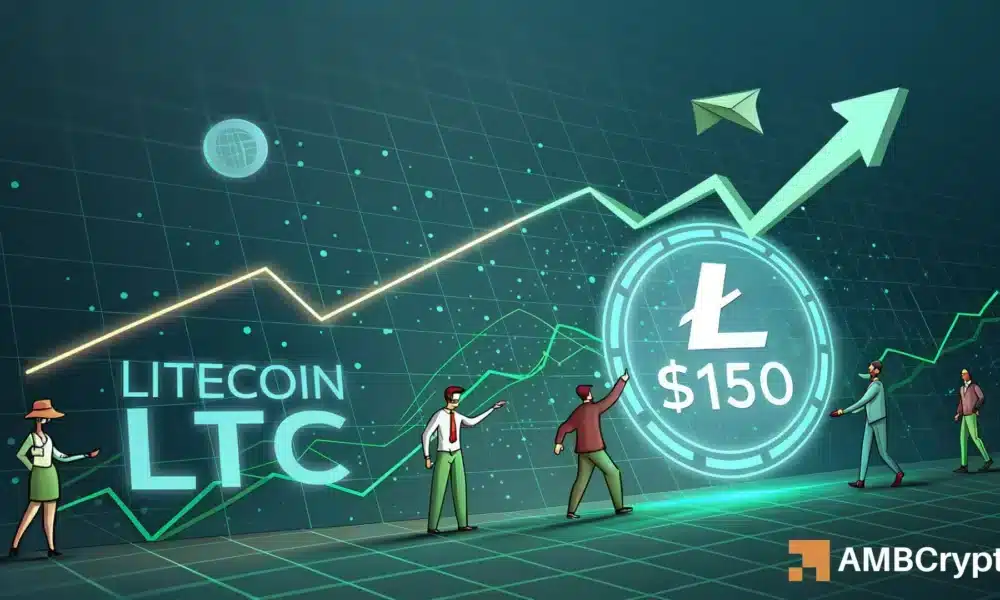Litecoin Analysis: A Deep Dive into Market Dynamics and Prospects
Litecoin (LTC) has become a focal point for traders and investors, particularly as it recently rebounded off a crucial trendline support for the fifth consecutive time. This development has sparked renewed discussions about its potential bullish momentum, even as whale activities appear to be on the decline. The current landscape presents a mixed bag of indicators: while strong retail interest is evident, decreasing trading volumes might pose challenges to a potential rally towards the $150 mark.
The significance of the trendline support cannot be overstated. With each retest solidifying its importance, market participants have begun to view this level as a key battleground. The resilience of Litecoin at this juncture suggests that buyers are stepping in, demonstrating their willingness to absorb selling pressure and potentially drive prices higher even amid a volatile market. This bullish sentiment stands in stark contrast to broader market uncertainties, making Litecoin a particularly compelling asset for those looking to navigate the complexities of cryptocurrency investment.
One of the key observations from recent on-chain metrics is the shift in activity from whales to retail traders. Data analyzed from CryptoQuant’s Futures Bubble Maps indicates that retail activity is heating up, pointing towards a potential increase in market volatility in the near future. The concentration of orders below the $1 million mark suggests that smaller investors are significantly contributing to market momentum. This shift highlights a scenario where retail interest is acting as a primary driver, enabling Litecoin to hold its ground despite a slowdown in larger trades.
Conversely, whale activity has noticeably contracted, impacting trading volume significantly. The 22% drop in trading volume indicates that larger investors have retreated, thereby placing the weight of market stability on retail investors. While this shift can understandably raise questions about the sustainability of Litecoin’s price action, it’s essential to recognize that historical patterns often require a boosting influx to breach significant resistance levels. Retail investors have a pivotal role to play, but the absence of larger players could limit the coin’s upward trajectory.
From a technical perspective, Litecoin’s charts offer a visually compelling narrative. The Stochastic RSI is nearing an oversold zone, suggesting an optimal reversal point could be imminent. This analysis, while colored by optimism, also carries warning signs. The price action appears bullish; however, maintaining the ascending trendline is critical. Traders are eyeing the $140 liquidity cluster as the next significant test. Surpassing this level could trigger a positive domino effect, potentially catapulting Litecoin towards the anticipated $150 mark.
Achieving or failing to break through the $140 and $150 thresholds will likely determine Litecoin’s next chapter. If retail enthusiasm can sustain momentum without the aid of whale support, we may witness an interesting dynamic unfold. Alternatively, should retail demand wane and whale activity fail to return, the hard-won gains may be in jeopardy. Changes in market psychology, driven by external factors or broader economic principles, will ultimately dictate Litecoin’s fate.
In summary, Litecoin’s current market scenario presents a complex blend of bullish potential and cautionary signals. The tested trendline support signals resilience, while retail trader engagement shows promising volume despite declining whale activity. However, the looming question remains: can retail investors alone propel Litecoin towards new heights, or will larger players need to re-engage for sustained upward movement? As the market progresses, it promises to reveal answers that could reshape investor strategies and outlooks for Litecoin in the cryptocurrency landscape.


